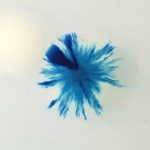Lien vers Pubmed [PMID] – 37245862
Lien vers HAL – pasteur-04109470
Lien DOI – 10.1016/j.micinf.2023.105152
Microbes and Infection, 2023, pp.105152. ⟨10.1016/j.micinf.2023.105152⟩
Introduction: Bordetella pertussis still circulates worldwide despite vaccination. Fimbriae are components of some acellular pertussis vaccines. Population fluctuations of B. pertussis fimbrial serotypes (FIM2 and FIM3) are observed, and fim3 alleles (fim3-1 [clade 1] and fim3-2 [clade 2]) mark a major phylogenetic subdivision of B. pertussis. Objectives: To compare microbiological characteristics and expressed protein profiles between fimbrial serotypes FIM2 and FIM3 and genomic clades. Methods: A total of 23 isolates were selected. Absolute protein abundance of the main virulence factors, autoagglutination and biofilm formation, bacterial survival in whole blood, induced blood cell cytokine secretion, and global proteome profiles were assessed. Results: Compared to FIM3, FIM2 isolates produced more fimbriae, less cellular pertussis toxin subunit 1 and more biofilm, but auto-agglutinated less. FIM2 isolates had a lower survival rate in cord blood, but induced higher levels of IL-4, IL-8 and IL-1 secretion. Global proteome comparisons uncovered 15 differentially produced proteins between FIM2 and FIM3 isolates, involved in adhesion and metabolism of metals. FIM3 isolates of clade 2 produced more FIM3 and more biofilm compared to clade 1. Conclusion: FIM serotype and fim3 clades are associated with proteomic and other biological differences, which may have implications on pathogenesis and epidemiological emergence.













